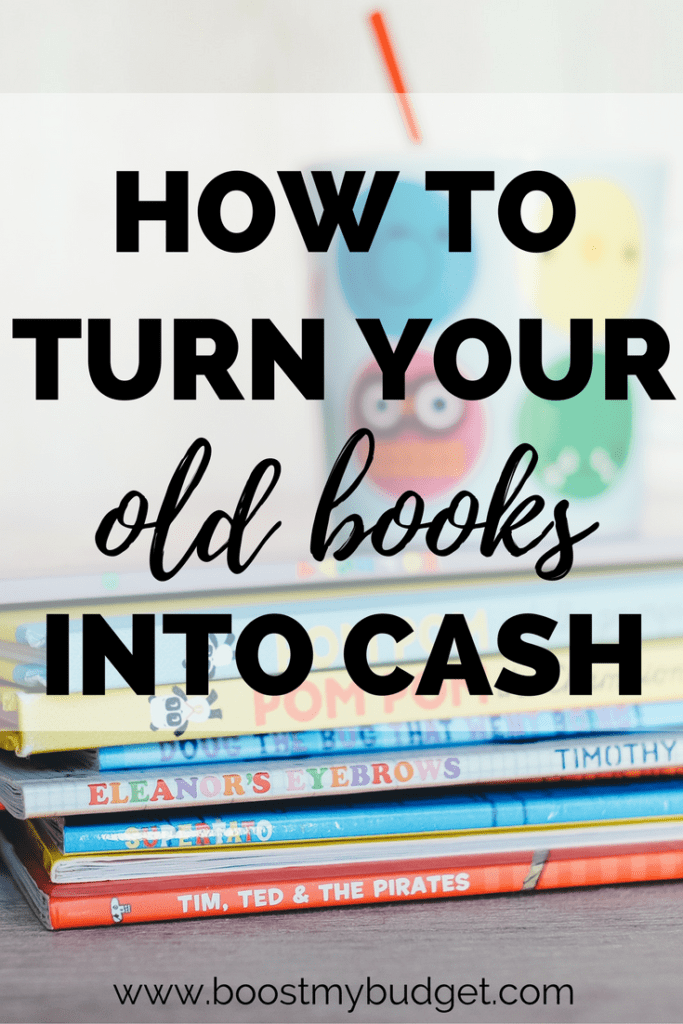Are you in need of some quick cash?
If you’re a book hoarder like me, you could be sitting on a nice source of easy money.
It’s never been easier to turn your second hand books into cash. With services like Ziffit, you can price up your books by simply scanning them into an app – and then they’ll come and collect from you, so you don’t even have to leave the house.
You could be looking at anything from pennies for cheap paperbacks, to £50 upwards for rare out-of-print books or textbooks.
Some people even make a living from scouring charity shops and library sales for cheap books to resell at a hefty profit.
If you’re interested in selling off some second hand books to make money, here’s a roundup of some of your options:
‘Cash for books’ apps
There are various ‘cash for books’ trade-in apps out there like Ziffit, We Buy Books, Zapper and Music Magpie. I’ve only used the first two, but have read good things about the others.
If you have a lot of books to get rid of and you don’t want to go to the trouble of selling each one individually, these apps will be your friend.

They all work in pretty much the same way. Simply use your phone’s camera to scan the bar code on the back of the book, and the app will tell you how much the company will offer for it. Continue with your whole stack of books. Depending on the company, they may take DVDs, CDs and games too.
If you’re not into your apps or you don’t have a smartphone, you can enter the book’s ISBN on the website instead.
Most of these sites will require you to sell a minimum amount. This will vary by platform. We Buy Books has a minimum offer of £5. Ziffit has a minimum of 10 items or £10 value.
When you’re done, the app will advise you on shipping.
Shipping is completely free with Ziffit and We Buy Books, the two I’ve tried. All you have to do is provide an appropriately-sized cardboard box for your books. I usually get boxes for free from the supermarket.
If your box weighs over a certain amount, the company will actually arrange a courier to come and pick it up from your house. If it’s less, they’ll email you a pre-paid shipping label for you to stick on your box, which you can then drop off at a local collection point (usually a newsagent).
Most of these sites will pay you either by bank transfer or PayPal. The payment terms will vary. We Buy Books pays within two business days of receiving your delivery, and Ziffit is about five.
Although these apps aren’t the best paying, they are such an easy way to sell books for cash. I would recommend them if you’re having a clear out and want to get rid of a lot of books quickly.
Pros:
- Best way to get rid of a large volume of books for little effort
- No need to package and ship books individually
- Quick and easy
- No hidden fees
- Throw in old CDs and DVDs while you’re at it
Cons:
- These sites only accept books that are in perfect condition. Submit books with pencil marks or a damaged cover, and you could find that they won’t pay you – and won’t return the book either
- May not offer the best value, especially for rarer books
- Prices can vary by company – it’s worth checking across multiple apps
- They won’t take some popular books if they already have a large stock
- Minimum number of items to sell
This is how much I made from the last order I sent off to Ziffit a few months ago. It averaged less than 70p per item, but to me it was worth it to clear out a lot of items quickly and make some easy money. The most expensive item was a hardback book on the director Federico Fellini. They didn’t think much of my Simpsons DVD!
Sell books on Amazon
Selling your books on Amazon is more work than selling in bulk using Ziffit, but can lead to much greater profits.
When you list a book on Amazon, you choose your own price. Sure, if there are other listings you’ll want to roughly match them, otherwise nobody will ever pick yours. But at least you have a choice in the matter. With the sites listed above, you have to either accept their offer or go elsewhere.
You can also sell books that are in less than perfect condition on Amazon – just as long as you’re honest in the product description.
Setting your prices can be a little complicated to start with, because you need to take into account the Amazon seller fees and your own postage costs.
Before you can sell on Amazon, you need to register for a seller account. If you intend to sell fewer than 35 items a month, you can sign up for a basic plan. This has no monthly fee but you’ll pay 75p for each item sold. If you want to go big time, choose the pro account which has a flat fee of £25 per month.
On top of the seller fees, Amazon take a 15% cut of your sale price. It’s worth noting that they apply a standard £2.80 to all book listings for postage. Usually, posting a paperback in the UK costs less than half of this. That’s how people are making (tiny) profits even on books that are listed for 1p.
Another plus for Amazon is that listings stay live forever. Unlike eBay, you don’t have to relist after a certain period. A less in-demand book might take a year to sell, but at least you can forget about it during that time. Popular books can sell within hours!
Amazon also have their Amazon Seller app which has a scan function, allowing you to easily see how much other copies of your product are selling for. This is a really useful feature for those who like to hunt through charity shops and library sales for books to resell.
Overall, Amazon is a great way to sell used books with a little bit more value and it’s a better option if you want to make a side business out of reselling books.
Pros:
- More control over your pricing
- You can sell books that the above sites won’t take – although don’t expect to make much!
- Registering at amazon.co.uk gives you access to all five Amazon sites in the EU
- Potential to turn it into a business
Cons:
- Takes more time to list and ship books individually
- Lots of competition
- Dependent on good buyer feedback
- Amazon takes a cut
Other ways to sell second hand books
The above two methods are probably the easiest and most accessible ways to sell your second hand books. However, there are loads of other options out there for reselling for profit. While I haven’t tried any of these myself, here are some other ways to sell old books that might work for you:
eBay
Listing is free for up to 20 items at a time. eBay take a 10% cut of your final sales price. I wouldn’t bother listing any standard paperbacks on eBay, but you might get lucky with a rare or out-of-print book. Photography and coffee table books also seem to do well.
Specialist sites
If you have a rare book or academic book which you expect to make a fair bit from, it might be worth checking a specialist site. Blackwell’s specialises in textbooks, and you’ll get slightly more if you accept payment in Blackwell’s gift cards – useful if you’re a student and need the cash for more books! AbeBooks is the go-to for rare and out-of-print books – although they do charge a monthly seller fee. Obviously if you think you have something extremely rare you might want to consult with an antiquarian book dealer.
Second hand book shops
To find second hand book shops that buy books, just do a Google search with the name of your town, or even check in the Yellow Pages if you still get it! Most second hand book sellers are small independent shops rather than big chains and they may not even have a website.
However, if you have rare or expensive books – or if you want to sell second hand books in bulk – its worth seeking out a local independent seller as they likely have the best market knowledge. They will consider your book collection for its own unique merits and offer you a customised price.
Community sales
Finally, you can always bypass the middle man and find customers yourself. This might work best if you’re at university or are part of a hobby group or community where you know a particular type of book will be in demand. Think university department noticeboards for textbooks, or local Facebook groups. It might be more of a faff, but you can usually expect higher prices since there are no third-party fees.
Some general tips for selling second hand books:
- In general, textbooks and business books sell for the most money, followed by other non-fiction books – especially coffee table books and cookbooks. Paperback novels have the least demand.
- Be realistic about the value of your books. The market is flooded with last year’s bestsellers. You will be lucky to get more than 1p for your Dan Brown or Sophie Kinsella.
- Don’t worry about having something too weird to sell. In general, the more niche it is, the more you can expect to make!
- When considering which method to go for, think about how much your time’s worth. Is it really worth it to spend the extra time listing, pricing and packaging books individually for Amazon or eBay? Hey, it might be – it depends on the expected sale price and how much free time you have!
- Keep in mind that some sites have a minimum threshold you have to reach before you can sell a batch.
- If you’re determined to get the best price for your books, be prepared to check it against all sites.
And since you obviously read a lot if you have all these books to get rid of, did you know you can make money reading books? Visit this post to learn more!
Have you had any experience selling second hand books? Which sites work best for you?




